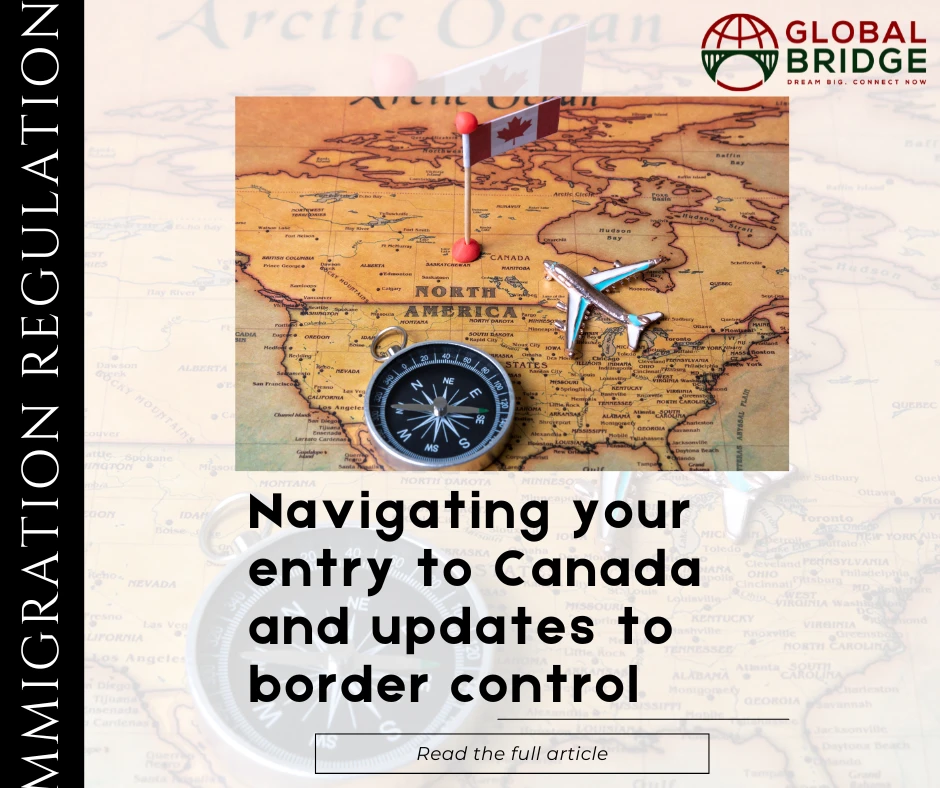
On January 31, 2025, the immigration regulations (IRPR) were amended to give Canada’s border services agency (CBSA) more authority over Canada’s border security. These changes provide border services officers with the authority to cancel electronic travel authorizations (eTAs) and temporary resident visas (TRVs) on a case-by-case basis, and in specific scenarios.
First, what exactly are an eTA and TRV? Both eTAs and TRVs have the same basic function: they allow a foreign national to enter Canada. Whether a person needs an eTA or a TRV depends on their country of citizenship (per their passport) and depends on their situation. Prior to entering Canada, a person must have either a valid eTA or TRV, and they will need to show the airline this before even boarding their plane. Otherwise, they may be denied boarding from their home country if they cannot provide evidence they are allowed to travel to Canada. Essentially, an eTA and TRV allow Canada to “pre-screen” foreign nationals and confirm they meet the requirements to enter the country. There are of course several exceptions to the requirement to possess an eTA or TRV. For example, an eTA is not required if travelling to Canada by land or sea, and US citizens and permanent residents of the US do not require an eTA or TRV.
But whether you have your eTA or TRV as required, or even if you don’t require one, you are not necessarily guaranteed entry to Canada. The Canada Border Services Agency, CBSA, controls the border. This is a different government department from IRCC, with their own regulations and policies in place for assessing a foreign national’s eligibility to enter the country.
When someone arrives into Canada, whether by sea, air, or land, they are assessed by a CBSA officer. They may be asked why they want to enter Canada, how long they will stay, and how much money they have available during their stay. They may also ask for evidence to support the person’s answers, for example bank statements or other proof of funds available, or return flight tickets to the person’s home country. If the person cannot satisfy the officer that they will comply with their temporary resident status in Canada, they may be refused entry.
Now, with recent changes to the immigration regulations, officers have more authority to control the borders, and may actually cancel an eTA or TRV in addition to refusing entry. Let’s look at one of those changes – section 12.06 of IRPR has been modified to include the following:
12.06 A foreign national who holds an electronic travel authorization becomes ineligible to hold such an authorization if, following its issuance,
(j) an officer has reasonable grounds to believe that the foreign national will not leave Canada by the end of the period authorized for their stay under Division 2 of Part 9; or
(k) they were refused a work permit or study permit in the course of an application for or renewal of a work permit or study permit referred to in subsection 12.04(6)
Corresponding to that, section 12.07 has been replaced with the following:
Cancellation
12.07 An officer may cancel an electronic travel authorization that was issued to a foreign national if
(a) the foreign national is inadmissible;
(b) the foreign national becomes ineligible to hold such an authorization under section 12.06; or
(c) the officer is satisfied that the electronic travel authorization was issued based on an administrative error.
There is similar wording regarding TRVs as well. The basic takeaway from these changes is that an officer may cancel an eTA (or TRV) as they deem necessary, based on certain criteria. This notably includes if the officer has reason to believe the person will not leave by the end of their authorized period of stay.
Let’s look at a scenario where these changes to the regulations can be applicable.
Sofia is from Italy. She wants to come to Canada to visit her Canadian boyfriend whom she met online. She doesn’t have a specific itinerary so she didn’t buy a return flight ticket. Although she doesn’t have a lot of savings since she quit her job a few months ago, she found this to be a good opportunity to travel to Canada and see how things go with her relationship while she has no work obligations.
As a citizen of Italy, Sofia only needs an eTA to come to Canada as a visitor. She applies and is quickly approved. As she prepares for her trip, she packs extra luggage in case she stays in Canada for a long time.
On arrival to Canada, an officer asks Sofia questions about her stay and for documents supporting her answers. After a lengthy assessment, the officer ultimately determines that Sofia is not likely to comply with her temporary visitor status or leave at the end of her authorized stay. At this point, the officer is authorized to not only refuse Sofia entry to Canada, but also cancel her eTA.
Sofia had no criminal or medical admissibility issues, and her eTA was approved almost immediately. So, what went wrong? Although Sofia may have had genuine intentions to stay in Canada temporarily and abide by her conditions as a visitor, there are several factors that the CBSA officer would have considered when assessing her entry. These could include:
· Not having a clear itinerary and not having a specific date she planned to leave by.
· Not having adequate funds to support her stay.
· Not having strong reasons to return to her home country such as ongoing employment or study.
· Coming with a more than normal amount of luggage for a temporary visitor.
This isn’t to say that anyone who wants to come to Canada will now be refused entry and have their eTAs or TRVs cancelled. CBSA always uses their discretion and a balance of reasonable grounds when assessing a person’s entry to Canada. But at the same time, one can see how even entering Canada is not as easy or simple as it may seem. Thankfully, IRCC has plenty of freely available information online to help those who want to come to Canada navigate their entry. And, if you need help planning out your stay in Canada as a temporary resident, you can always feel free to reach out for a consultation.
Craig Lont / Associate RCIC


